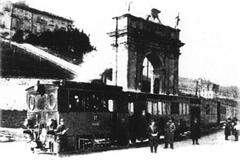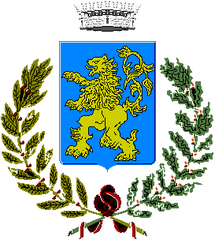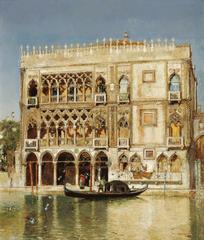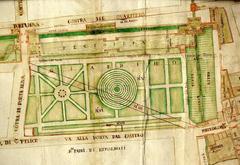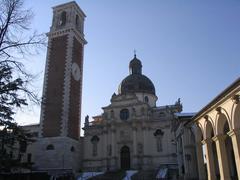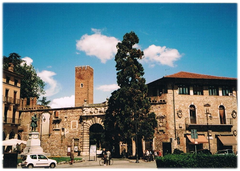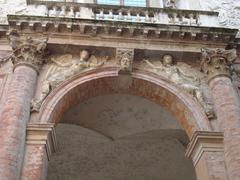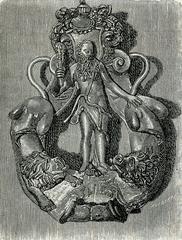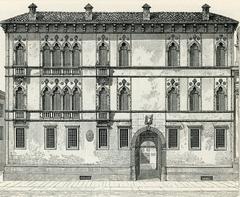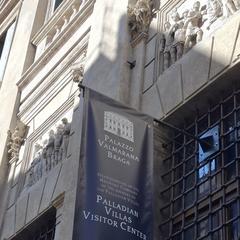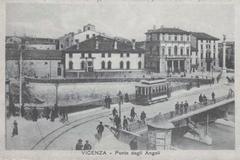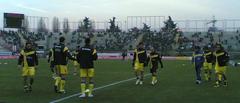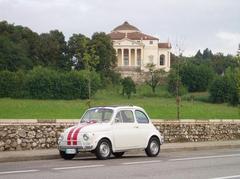Palazzo Pojana Visiting Hours, Tickets, and Vicenza Historical Sites Guide
Date: 04/07/2025
Introduction
Palazzo Pojana, an iconic Renaissance palace in the heart of Vicenza, Italy, stands as a remarkable testament to the city’s transformation under the influence of Andrea Palladio, one of history’s most celebrated architects. This comprehensive guide will help you discover its historical and architectural significance, provide up-to-date details on visiting hours and tickets, and offer travel tips for exploring Vicenza’s UNESCO World Heritage-listed architectural treasures. Whether you’re an architecture enthusiast or a curious traveler, this resource equips you to make the most of your journey to Palazzo Pojana and nearby Palladian masterpieces (Vicenza Ville Palladio, UNESCO World Heritage, Tours-Italy).
Table of Contents
- Introduction
- History and Cultural Significance
- The Renaissance Transformation of Vicenza
- Architectural Features and Urban Context
- Visitor Information
- Guided Tours and Special Events
- Nearby Attractions & Travel Tips
- The Palladian Legacy and UNESCO Status
- Frequently Asked Questions (FAQ)
- Conclusion and Call to Action
- References
1. History and Cultural Significance
Palazzo Pojana (sometimes spelled Poiana) is a landmark of Renaissance urbanism in Vicenza, reflecting the city’s evolution from medieval stronghold to a center of humanist ideals and classical proportion. Commissioned by the noble Pojana family, the palace was constructed between 1563 and 1566, unifying two adjacent medieval buildings at the strategic corner of Contrà Do Rode and Corso Palladio. While the authorship is debated, the design is widely attributed to Andrea Palladio, whose influence is evident in the palace’s harmonious façade, classical pilasters, and integration into the urban fabric (Vicenza UNESCO).
The palace’s architectural innovations—such as the giant order of Corinthian pilasters and the distinctive arch across Contrà Do Rode—showcase Palladio’s genius in adapting classical forms to new spatial and urban demands. Palazzo Pojana played a key role in establishing Vicenza’s reputation as a Renaissance jewel, ultimately contributing to its designation as a UNESCO World Heritage Site (World Heritage Site).
2. The Renaissance Transformation of Vicenza
Vicenza Before Palladio
Vicenza’s roots date back to Roman times, but by the late Middle Ages, it was a prosperous city under Venetian rule, characterized by a blend of Gothic, medieval, and early Renaissance buildings (Italy Heaven).
The Rise of Palladio
Andrea Palladio (1508–1580) reimagined Vicenza’s urban identity. Inspired by Roman antiquity and Renaissance humanism, he worked for the city’s elite, infusing their residences with classical symmetry, harmonious proportions, and innovative spatial organization (Veneto Explorer).
3. Architectural Features and Urban Context
Design and Construction
Palazzo Pojana exemplifies the Palladian urban palace, blending grandeur with practicality. The project merged two properties, connected by an elegant arch spanning Contrà Do Rode. Its façade features six colossal Corinthian pilasters (lesene giganti), tabernacle windows with classical pediments, and a carefully balanced rhythm that enhances its verticality and presence (Vicenza UNESCO). Despite later alterations at street level, the upper stories retain their Renaissance integrity.
Urban Setting
Located on Corso Andrea Palladio, the city’s principal thoroughfare, Palazzo Pojana is surrounded by other Palladian masterpieces such as the Basilica Palladiana, Palazzo Chiericati, and Palazzo Barbaran da Porto (Trek Zone). Its arch over Contrà Do Rode not only connects the palace but frames dynamic city views, reinforcing the dialogue between architecture and the urban environment.
4. Visitor Information
Visiting Hours and Tickets
- Regular Access: Palazzo Pojana is primarily a private residence and commercial property, so routine public access is not available. The exterior can be viewed at any time.
- Special Openings and Events: Occasionally, guided tours and cultural events provide access to the interior. These are usually organized by local heritage or architectural associations.
- Hours for Special Events: Typically 10:00 AM – 6:00 PM.
- Tickets: Exterior viewing is free. Interior access during special events may require a ticket (prices vary by event).
Stay updated via the Vicenza Ville Palladio website or Vicenza Tourist Office.
Accessibility
- Exterior: The area around Corso Palladio is pedestrian-friendly and accessible.
- Interior: Access is limited and may present challenges for those with mobility impairments due to steps and uneven surfaces. Contact the tourist office for details (VicenzaVillePalladio).
Getting There
- On Foot: Easily accessible from Vicenza’s main squares; the city center is ideal for walking.
- By Train/Bus: About a 10–15 minute walk from the train station; local buses stop near Piazza dei Signori.
- By Car: Limited parking in the historic center; park on the periphery and walk in (Audiala).
Photography and Amenities
- Photography: Permitted outside, with the best light in the morning or late afternoon. Interior photography may be restricted during tours—check with event organizers.
- Amenities: Cafés, restaurants, and public restrooms are available nearby on Corso Palladio and Piazza dei Signori (Kimberly Kephart Travels).
5. Guided Tours and Special Events
Palazzo Pojana opens its doors during special occasions such as “Open Monuments” days or cultural festivals, often accompanied by expert-led tours highlighting its history and architectural features. Check the Vicenza Ville Palladio events page and Vicenza Tourist Office for upcoming opportunities.
6. Nearby Attractions & Travel Tips
- Basilica Palladiana: A Palladian civic masterpiece on Piazza dei Signori.
- Palazzo Chiericati: Houses the city’s art museum.
- Teatro Olimpico: The world’s oldest surviving indoor theater, designed by Palladio.
- Villa La Rotonda: A short drive away, this villa is Palladio’s most famous suburban design (The Crazy Tourist).
Travel Tips:
- Combine a walk along Corso Palladio with stops at multiple Palladian sites (My Earth is One).
- Visit in spring or autumn for pleasant weather and lighter crowds.
- For deeper insights, join a guided architectural tour (VicenzaVillePalladio).
7. The Palladian Legacy and UNESCO Status
Palazzo Pojana is one of 23 Palladian monuments in Vicenza’s historic center recognized by UNESCO in 1994. Its inclusion underscores its role as a masterpiece of Renaissance creativity and urban planning (Wikipedia: City of Vicenza and the Palladian Villas of the Veneto). Palladio’s influence extended beyond Italy, shaping architectural traditions in England, the Americas, and beyond (World Heritage Site).
8. Frequently Asked Questions (FAQ)
Q: What are Palazzo Pojana’s visiting hours?
A: The palace is not open as a regular museum. The façade is viewable from the street at any time. Interior access is possible only during special events—check official sites for details.
Q: Is there an entrance fee?
A: No fee for exterior viewing. Tickets may be required for special interior tours.
Q: Are guided tours available?
A: Yes, but only during events or by prior arrangement with local associations.
Q: Is the palace accessible for visitors with disabilities?
A: The exterior area is accessible, but interior access is limited. Contact the tourist office for assistance.
Q: How do I get there?
A: On foot from Vicenza’s train station or Piazza dei Signori; parking is limited in the historic center.
9. Conclusion and Call to Action
Palazzo Pojana is a captivating highlight of Vicenza’s Renaissance heritage and Andrea Palladio’s enduring legacy. While its interior is rarely open, the façade offers a powerful glimpse into the principles that shaped Western architecture. Enhance your visit by exploring nearby sites, joining expert-led tours, and using official resources for the latest event information.
For personalized travel tips, offline maps, and notifications about special openings, download the Audiala app. Follow us on social media for exclusive content and updates. Dive deeper into Vicenza’s architectural wonders by reading our related articles and guides.
10. References
- Visiting Palazzo Pojana in Vicenza: History, Hours, and Travel Tips
- Veneto Explorer, Palladio Architecture
- Nomadic Niko, Vicenza and Palladian Architecture
- Trek Zone, Palazzo Pojana Vicenza
- World Heritage Site, City of Vicenza and the Palladian Villas of the Veneto
- Vicenza UNESCO official site, Palazzo Poiana
- Ars Artis, Palladian Architecture Insights
- Wikipedia, City of Vicenza and the Palladian Villas of the Veneto
- Tours-Italy, Vicenza Tourist Information
- Vicenza Ville Palladio, Palazzo Poiana
- Audiala App, Vicenza Tours
- The Crazy Tourist, Best Things to Do in Vicenza
- Kimberly Kephart Travels, Best Things to Do in Vicenza
- My Earth is One, The City of Vicenza and Palladian Villas
